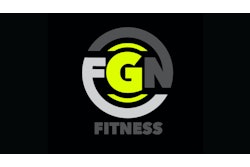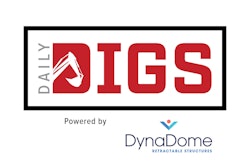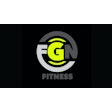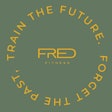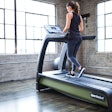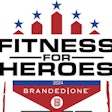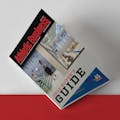Your members can maintain function in activities of daily life and improve sports performance with core training.
Statistics report that 50 percent of people in the U.S. will experience some kind of back trouble in their lifetime. For many, it will be chronic. Fitness centers can help these people by offering training for the core muscles to enhance function and reduce pain.
The value of core fitness goes beyond the avoidance of lower back pain. Properly training the core to work with the rest of the body can result in less tension in the extremities during any movement or holding position. If the core is strong, for instance, there will be less tension in the arms and shoulders of a cyclist or a typist, and less lower back fatigue in a golfer or a grandparent. When muscles throughout the body contribute to the effort, they cushion the strain on the body. When an assembly line worker develops a sore neck and shoulders, for instance, the assumption might be that he/she has a weak upper body, when, in truth, he/she needs to strengthen the core. Lang refers to proper firing sequence as key to core integrity. Ideally, the pelvic floor and transverse abdominus fire first. That falls in line with other professionals' recommendations to "isolate, then integrate." Paul Chek, of the C.H.E.K. Institute, Vista, Calif., emphasizes that isolation is necessary to regain or establish motor control and function. To both determine ability to stabilize and to enhance it, Chek recommends the following exercise, performed with a blood pressure cuff on. Use of a full-size towel or a trainer's hand also helps improve proprioception.
What is core training?
The "core" consists of two areas (inner and outer), both of which need to be trained for fully functional core strength. The inner area, or deep abdominal muscles, plays a vital role in stabilization. The outer area provides gross stability and movement. The muscles associated with the core typically include the transversus abdominal wall, inner and outer oblique, rectus abdominus and erector spinae muscle group. Muscles of the lower back, shoulders, gluteals and hamstrings are equally important in linking the body together. Many programs, exercises and machines focus only on the outer area. Without first developing a strong foundation with the inner muscles, joint problems or injury can easily occur. Most strength exercises performed in fitness centers are isolation exercises. These train the body for strength, but only within the range of the exercise itself. Performing crunches, for example, can make members good at crunches, but doesn't help them pick up children, rake the leaves or swing a golf club. Typical strength training attempts to develop a body one part at a time by isolating specific muscles. This kind of non-functional training reduces practical application of an exercise to life or sport. Isolation exercises do have their place: in rehabilitation, early phases of exercise programming and body building, where strength and hypertrophy are the goals. Outside of that, integrated exercises are necessary to create strength that has practical application in real life. The goal of core training is to improve balance, posture, body awareness and coordination. In sports enhancement, a kinesthetic analysis of the movements of the body helps strength coaches determine how best to train the body for sport. In order to affect that kind of change in all clients, professionals need to simulate movements involved in daily living. Movement exercises of the core performed in everyday life include flexion, extension, lateral flexion and rotation. Flexion typically works with gravity in standing and seated positions, though the opposite is true in lying positions. In consideration of clients' postural needs, core work should enhance muscle strength, rather than further encourage weakness. Exercises without movement are stability exercises. For most, stabilization is the primary role of the core. Think about the amount of time clients and members sit or stand in the same basic position. How long do they sit at a computer? How often do they push, pull or lift something that requires they remain upright?Assessing clients' core needs
How do you assess what members need and where they should begin? How do you know if a client has good core integrity? The question to ask, says Annette Lang, Reebok University educator and nationally known presenter, is whether a client is able to move when they want or need to, and are able to keep things still when they do that. Exercises Lang finds helpful for determining core integrity include a plank hold or a side bridge. "Observing the breathing technique without the client knowing you are looking at anything is valuable," she says.Developing Core Strength
- Assess the client's firing patterns. Determine strengths, weaknesses and compensation patterns.
- Strengthen the inner muscles. Use isolation exercises to train the "personal girdle" to support during movement phases. Watch for the abdominal wall being drawn in and kept flat, as opposed to bulging.
- Strengthen the outer areas with integrated exercises that link the body together. Include a variety of exercise motions; rotation, lateral flexion, extension, forward flexion and stabilization exercises.
- Sequence rotation before linear movements, load eccentrically first and use opposites.
- Observe tension elsewhere in the body, and address firing patterns throughout exercise progressions.
- Fold a full-size towel lengthwise and keep it under your client's back. Instruct the client to add a slight pressure to the towel by drawing the navel toward the spine. Fold the towel over again if the client feels no target.
- Have the client maintain the same pressure throughout the exercise. They should breathe in a relaxed manner. Hold one end of the towel and then gently try to draw it away, ensuring that the abdominals are activated.
- Instruct the client to alternately lift and lower each leg in a marching manner until the knee is at 90 degrees over the hip.
- The goal is for clients to keep the pelvis stable. If the towel begins to slide out, the client has reached fatigue.
- Repeat up to 15 cycles.



















